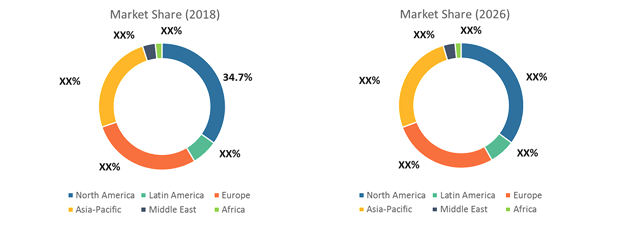Ophthalmoscope examines the interior structure of an eye and are combined with a source of light and lenses, which enables effective examination of interior structures of an eye. Ophthalmoscopes are used to perform ophthalmoscopy, which is regular examination of the eyes. Moreover, various other diseases such as presbyopia, dry eye, cataract, diabetic retinopathy, amblyopia, and others are diagnosed using ophthalmoscopes. In medical practice, ophthalmoscopes are most commonly used on patients who are suspected to have diabetes, hypertension, headaches, head trauma/injury, loss of/degraded vision, and eye pain. Ophthalmoscopes are divided into categories such as direct ophthalmoscopes and indirect ophthalmoscopes. Direct ophthalmoscopes are handheld devices, which are used by physicians to diagnose, whereas indirect ophthalmoscope can be mounted on head by the physician and the lens is held close to the eye. Laser indirect ophthalmoscopes are widely adopted by ophthalmologists, as using laser indirect ophthalmoscopes is convenient than direct ophthalmoscopy.
Technological advancements in ophthalmoscopes is expected to drive laser indirect ophthalmoscope market growth over the forecast period
Manufacturers such as Welch Allyn, Heine Optotechnik GmbH & Co. KG, Iridex Corporation, Keeler Limited, and others offer technologically advanced laser indirect ophthalmoscopes. Laser indirect ophthalmoscopy offer advantages such as wider field of view, better image resolution, less irritation to the ocular surface, and ease in ophthalmic examination, as the ophthalmoscope is mounted on the forehead of the physician/ophthalmologist. Indirect ophthalmoscopes available today facilitate improvements in eye examination results, and care. For instance, Smart LIO offered by Lumenis is a multiwavelength system in the market, and is compatible with multiple Lumenis photo coagulators. Smart LIO supports three wavelengths such as 532 nm (green), 577 nm (yellow), and 659 nm (red). Other technological advancements include adjustable interpupillary distance, adjustable mirrors, portable power packs, dust sealed optics, and others. These factors are expected to drive the global laser indirect ophthalmoscope market growth over the forecast period.
The global laser indirect ophthalmoscope market size was valued at US$ 89.5 million in 2017 and is expected to witness a robust CAGR of 4.2% over the forecast period (2018–2026).
Figure No.1: Global Laser Indirect Ophthalmoscope Market Share, by Region (%), 2018 - 2026

To learn more about this report, Download Free Sample
Source: Coherent Market Insights Analysis (2017)
Increasing prevalence of ophthalmic disorders is expected to support growth of the global laser indirect ophthalmoscope market over the forecast period
Rising prevalence of certain ophthalmic diseases such as peripheral neovascularization, lattice degeneration, and diabetic retinopathy is driving growth of the market. For instance, according to the Royal National Institute of Blind People (RNIB), over 5.7 million people are suffering from sight-threatening eye conditions in the U.K, in 2014. Moreover, 2 million people were suffering from sight loss in 2016, which is expected to increase to over 2.7 million people by 2030. Moreover, according to the Royal National Institute of Blind People (RNIB), in 2014, around 350,000 people were registered as blind or partially sighted. Increasing healthcare expenditures for treatment of sight loss, blindness, and sight-threatening conditions are expected to propel demand for basic eye care and examination, thereby propelling demand for necessary equipment such as laser indirect ophthalmoscopes over the forecast period. According to the RNIB- Eye Health 2016 report, in the U.K., during 2016, sight loss, blindness, and sight-threatening conditions accounted for US$ 2.03 million, US$ 0.27 million, and US$ 5.7 million healthcare expenditures, respectively.
However, product recalls are expected to restrain the global laser indirect ophthalmoscope market growth over the forecast period. For instance, in February 2018, Iridex Corporation voluntarily recalled TruFocus LIO Premiere Laser Indirect Ophthalmoscope, as three adverse events occurred during procedures in which the TruFocus LIO Premiere was used.
Some of the major players operating in the global laser indirect ophthalmoscope market include Ellex Medical Lasers Ltd, Iridex Corporation, Alcon, Carl Zeiss Meditec AG, Lumenis Ltd., Topcon Medical Laser System, Nidek Co. Inc., Ziemer Ophthalmic Systems AG, Heine Optotechnik GmbH, and Keeler Ltd.
Share
Share
Missing comfort of reading report in your local language? Find your preferred language :
Transform your Strategy with Exclusive Trending Reports :
Frequently Asked Questions
Select a License Type
Joining thousands of companies around the world committed to making the Excellent Business Solutions.
View All Our Clients